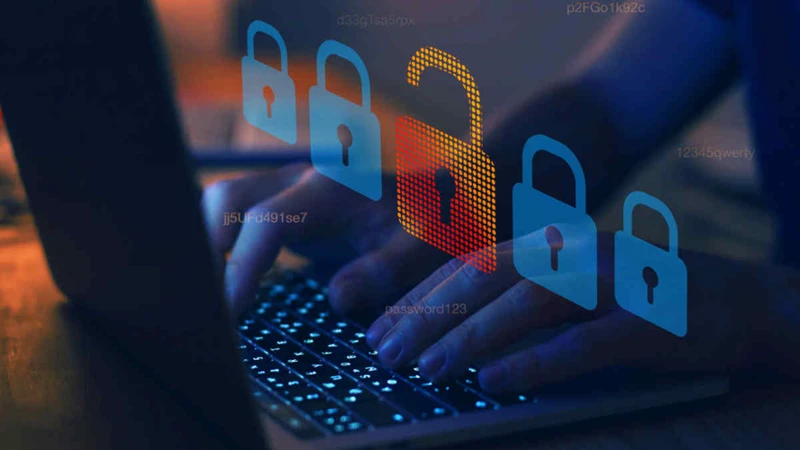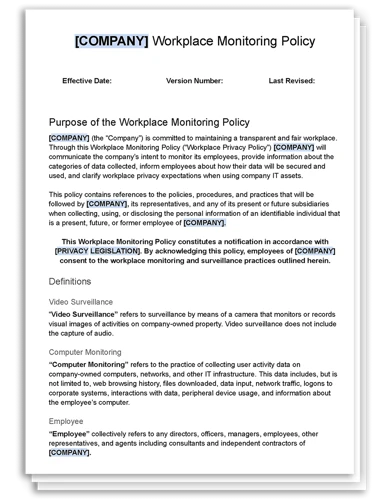In today’s digital age, cybersecurity is a critical concern for businesses of all sizes. With the increasing number of cyber threats and attacks, companies are constantly looking for ways to enhance their security measures. One controversial method that has gained attention is employee video monitoring. This practice involves using video surveillance to monitor employees’ activities in the workplace. While some argue that it is necessary for security purposes, others raise concerns about privacy invasion and ethical implications. In this blog post, we will explore the concept of employee video monitoring as a cybersecurity measure and discuss its benefits and drawbacks.
The Need for Cyber Security Measures

As technology continues to advance, so do the methods employed by cybercriminals to breach systems and steal sensitive data. Cyber attacks can have devastating effects on businesses, including financial loss, damage to reputation, and legal implications. It is essential for organizations to implement robust cybersecurity measures to protect their assets and maintain the trust of their customers. Employee video monitoring is one such measure that aims to enhance security by monitoring employee behavior and detecting any suspicious activities that may pose a threat to the organization.
Benefits of Employee Video Monitoring

One of the primary benefits of employee video monitoring is enhanced security. By having cameras installed in key areas of the workplace, employers can deter potential intruders and prevent unauthorized access to sensitive areas. In the event of a security breach, video footage can provide valuable evidence for investigation and help identify the perpetrators. Additionally, employee video monitoring can help prevent internal threats, such as employee theft or misconduct, by monitoring employee behavior and detecting any unusual activity.
Another benefit of employee video monitoring is increased productivity. Knowing that their actions are being recorded can motivate employees to stay focused on their tasks and adhere to company policies and procedures. By monitoring employee performance, employers can identify areas for improvement and provide targeted training and support to help employees succeed in their roles. This can lead to a more efficient and productive workforce, ultimately benefiting the organization as a whole.
Legal Considerations
While employee video monitoring can offer various benefits, it is essential for employers to be aware of the legal considerations surrounding this practice. In many jurisdictions, there are laws and regulations that govern the use of surveillance cameras in the workplace. Employers must ensure that they comply with these laws and respect the privacy rights of their employees. It is crucial to inform employees about the presence of video cameras and the purpose of monitoring, as well as to establish clear policies regarding the collection and use of video footage.
Drawbacks of Employee Video Monitoring
Despite the potential benefits, employee video monitoring also has several drawbacks that must be considered. One of the primary concerns is invasion of privacy. Employees may feel uncomfortable knowing that they are being constantly watched and monitored, leading to feelings of distrust and resentment towards their employer. This can have a negative impact on employee morale and job satisfaction, ultimately affecting productivity and retention rates.
Another drawback of employee video monitoring is the potential for misuse of video footage. If not handled appropriately, video footage can be vulnerable to unauthorized access and misuse, leading to breaches of privacy and confidentiality. Employers must take measures to secure video data and ensure that it is only accessed by authorized personnel for legitimate purposes. Additionally, there is a risk of video surveillance being used for discriminatory or unfair practices, such as targeting specific employees based on personal characteristics or behaviors.
Best Practices for Employee Video Monitoring
To ensure that employee video monitoring is implemented effectively and ethically, employers should follow best practices and guidelines. Firstly, it is crucial to establish clear policies and procedures regarding the use of video surveillance in the workplace. This includes informing employees about the presence of cameras, the purpose of monitoring, and the storage and retention of video footage. Employers should also provide training to employees on how video monitoring works and what is expected of them in terms of behavior and performance.
Additionally, employers should limit the use of video surveillance to areas where it is necessary for security purposes, such as entrances, exits, and high-security zones. Monitoring should be conducted in a transparent and non-invasive manner, respecting the privacy of employees and avoiding unnecessary intrusion into their personal space. Employers should also regularly review and assess the effectiveness of video monitoring and make adjustments as needed to ensure compliance with legal requirements and ethical standards.
Interested in enhancing your business security with cyber security measures? Learn more about the benefits of remote video monitoring for business security and how video surveillance can improve workplace safety. Understand the importance of balancing employee privacy rights with video monitoring for enhanced employee safety. Additionally, explore different video storage options for your surveillance system to ensure maximum security for your business.
Conclusion
Employee video monitoring can be a valuable cybersecurity measure for businesses looking to enhance security and protect their assets. However, it is essential for employers to balance the benefits of monitoring with the potential drawbacks and legal considerations. By following best practices and guidelines, employers can implement video surveillance in a responsible and ethical manner that respects the privacy rights of employees while promoting a safe and secure work environment. Ultimately, employee video monitoring should be part of a comprehensive cybersecurity strategy that prioritizes both security and respect for individual privacy.







